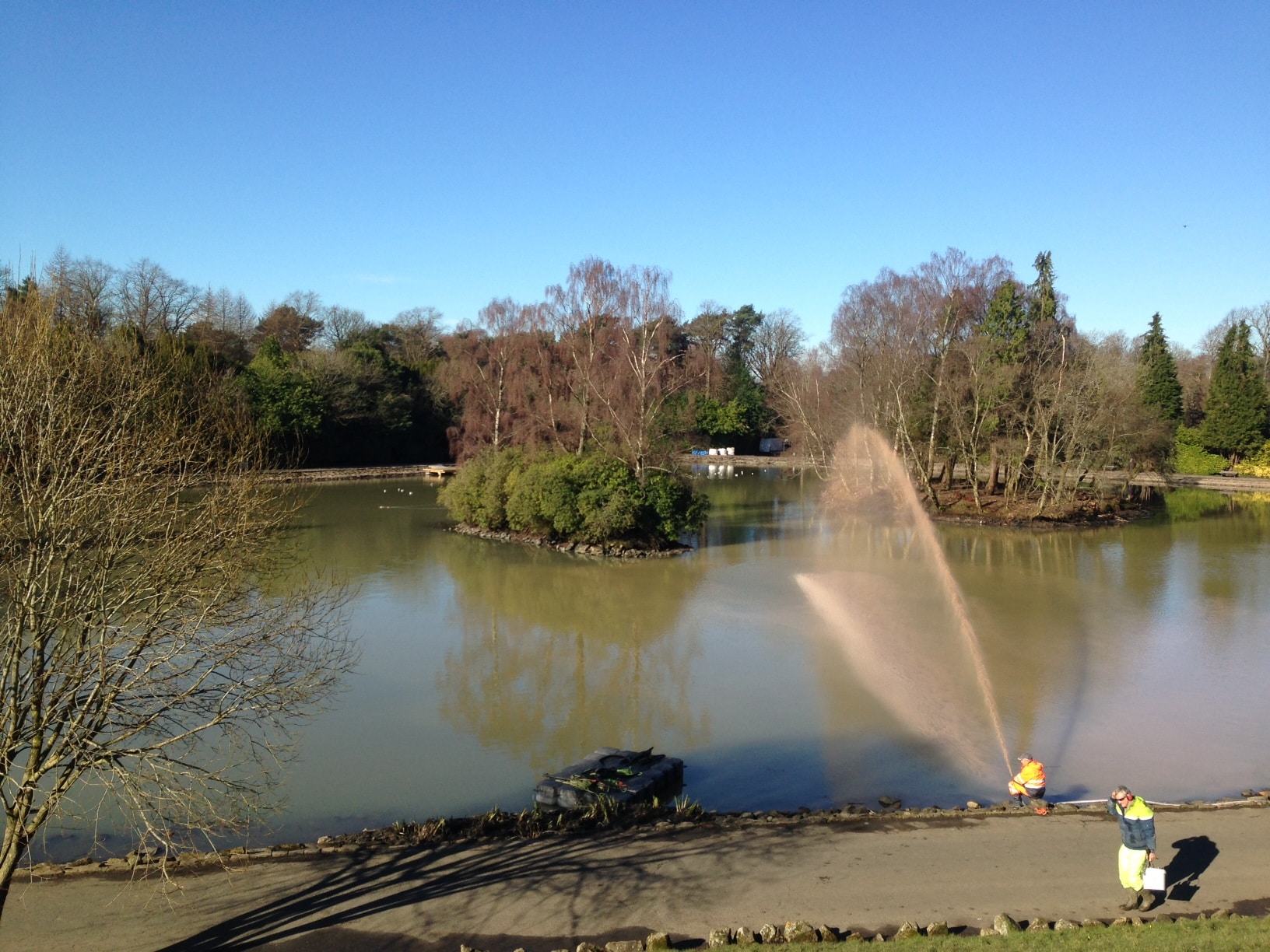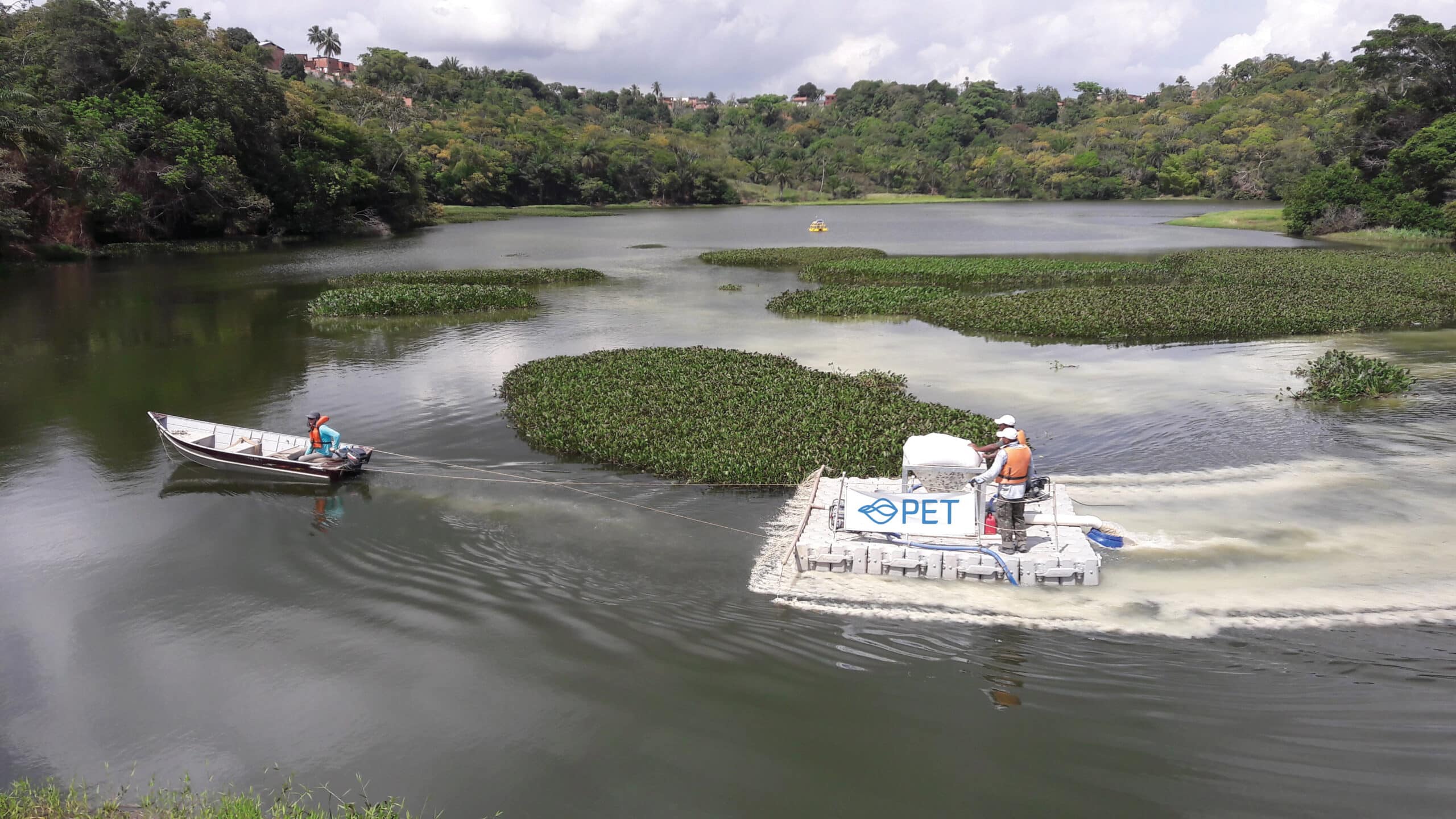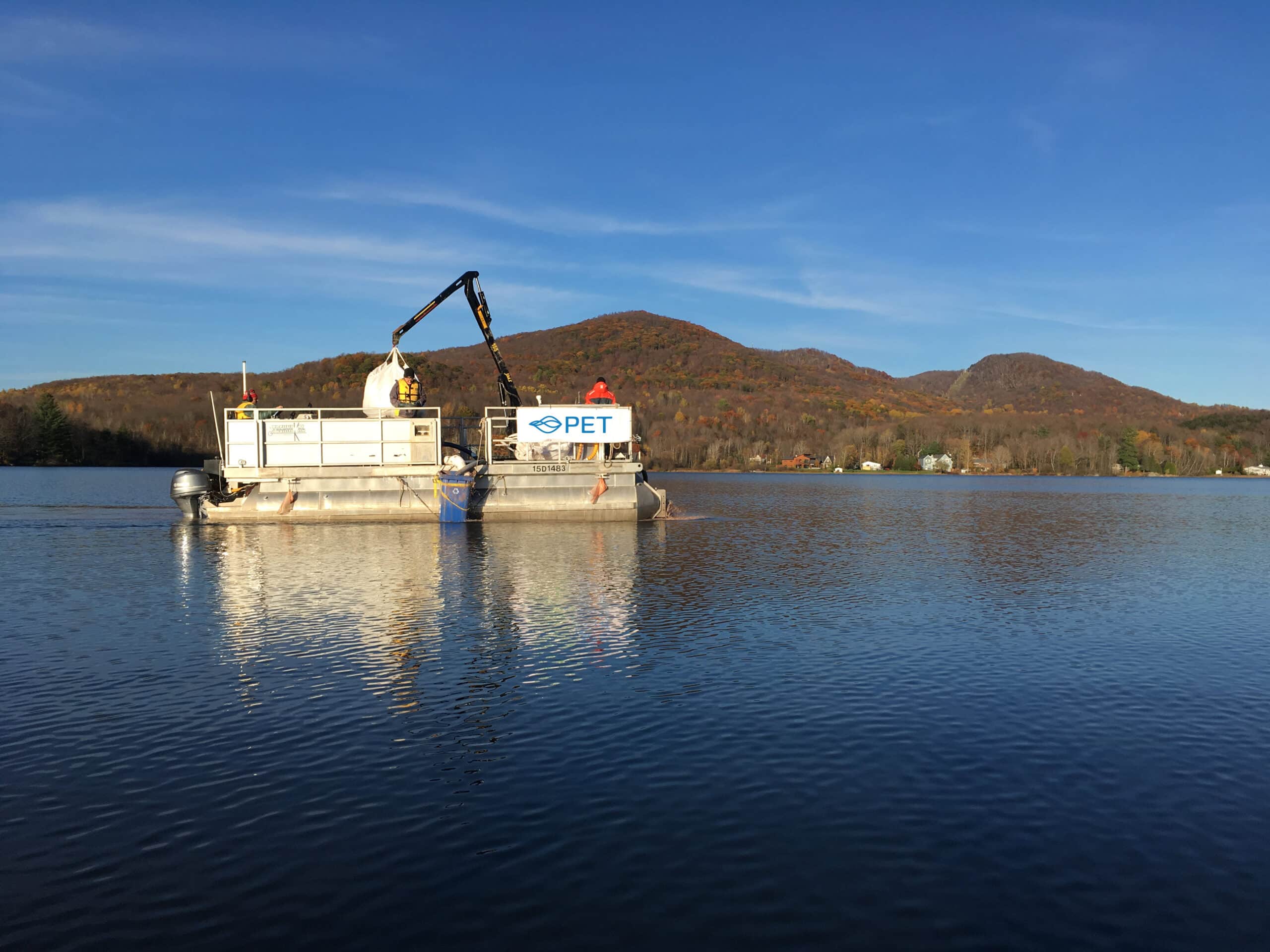Application methods and approvals
As each application of Phoslock is different depending on the water body involved, we have various methods and custom engineering alternatives to suit different conditions.
Phoslock has been extensively tested by regulators and scientific institutions worldwide and is produced under a Quality Management System that complies with ISO – 9001:2015. It is accredited by the Water Quality Association as meeting the NSF/ANSI/CAN 60 standard for chemicals being applied to drinking water. It has been applied to both heavily impacted recreational waterbodies as well as natural waterbodies with high conservation value which fall under the remit of legislation such as the European Water Framework Directive and the US Clean Waters Act.
The selection of equipment depends on the type of waterbody, access and overall dose strategy.

Shore-based application
Using one of three compact mixing system types for:
- Farm size, very small applications
- Medium size – MD-2 machine <5 tonnes
- Large – MD-1 machine

Bulk Loading Methods
All terrain forklifts (telehandlers) and cranes are usual methods for handling pallets and bulk bags at site.

Pontoon workboat: NATO-type
NATO steel pontoons are used for large projects. Large load rating with multiple pontoon sections can be connected, with fast assembly.

Pontoon workboat: Modular Jetfloat, Candock, P&D pontoons
Versatile, modular pontoon floats with 9.9 HP outboard motor. Handles 25 kg or 1050 kg bags. Multiple units can be attached for a larger payload. Multiple floats can be connected to increase payload capacity.

Multihull workboat: Aluminum fabricated workboat
Self-propelled pontoon workboat complete with hydraulic crane for handling bulk bags. Certified survey vessel.

Airboat application: Unique delivery system for large shallow water bodies
A novel method of Phoslock slurry application to a broad area for shallow water bodies such as the wetland areas in Florida, where outboard driven workboats are impractical. Individual airboat payload capacity is quite low but this is compensated for by rapid application and fast return for re-load.

Direct injection: Delivered directly to sediments via drop pipe system
Direct injection of Phoslock is used where maximum and complete delivery is required for sediment treatment. The drop pipes are PE construction and designed to break if snagged on underwater obstacles to prevent damage or loss to on-board equipment.

Dry Phoslock granules dispersed over surface for deep lake treatments
Phoslock is applied as a dry granule to the lake where it is desirable for it to sink to depth before dispersing. The system utilises a modified agricultural fertiliser spreader. Some dust is generated due to attrition. Granule coating, to impart slow release properties, is beneficial.

SQUID: Remote controlled applicator for hazardous sites
A remote controlled application head on floats disperses Phoslock through two head systems, like a lawn sprinkler. Throw distance is in a radius of 10-15 metres and can be attached to floating hose up to 200 metres long. This option is ideal for hazardous water bodies where access is restricted

GPS Tracking and Mapping
GPS tracking using dedicated systems can be overlaid to satellite images for project application records.
